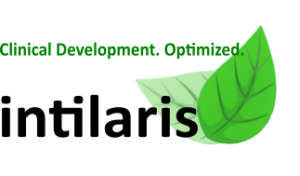Clinical Trial Protocol Automation
One of the barriers for wider Clinical Development Operation (CDO) process integration is the inefficient and document driven clinical trial protocol development. If a research organization is aiming to improve and streamline their operational processes the clinical trial protocol automation is a necessity.
But, how would one transform the current protocol development process to be more agile and to support better downstream process integration and automation?
For an in-depth conversation on this topic, please reach out to us.

Integrate Processes and Automate Information Flow
The answer to the above question relies on a more structured approach to clinical trial planning, clinical trial design and protocol authoring. We can no longer rely on manual, document-driven processes to develop and design our protocols.
To make that transition from document driven to structure and content driven development, we need to reach across the functional silos and engage all the stakeholders to participate in that change. Each stakeholder (clinical lead, medical writer, standards manager, data manager, drug supply, feasibility strategist, etc.) would ensure that the proposed structured model contains enough information to start their clinical trial operation activities.
Once the structured model for trial planning, design and protocol authoring is in place, the organization can start integrating and simulating the information flow and parallelize the downstream process execution for better operational efficiency.
Furthermore, the entire structured model and the process integration can be digitized to serve as the basis for digital data flow.
Challenges to Clinical Trial Protocol Automation
The biggest challenge to achieve the state where clinical trial protocol automation drives all the CDO downstream processes is the siloed thinking (people and systems) and manual processes.
To change the current status quo, the new approach should be a win-win situation for all stakeholders. Therefore, one needs to engage the stakeholders across organization strategically and develop for each a win-win outcome (if I provide this input which benefits others, then input of others benefits me in this way…).
Added challenge for the organizations that do not transform their protocol planning, design and authoring development process is the difficulty and perhaps inability to benefit from Digital Data Flow platform in the future.
Why intilaris?
The required business transformation can hardly be executed internally – if it was so, it would have been already done. Furthermore, the change requires much different skills then those executed daily by the stakeholders.
Intilaris, has extensive experience in aligning and engaging cross-functional stakeholders toward a more structured and standardized clinical trial protocol planning and design resulting in CDO process automation.
We have experienced these challenges and were able to engage with stakeholders to develop win-win situations and gather the enthusiasm for the transformation. We call our approach Streamlined Study Planning and Design, it utilizes TransCelerate Common Protocol Template and it fits perfectly with the TransCelerate Digital Data Flow platform as the enabler for the change.
Our clients report early benefits in data collection and management Efficiency in
- CRF Design Process from Days to Hours
- Accelerated Study Build in RAVE from Weeks to a Day
For an in-depth conversation on this topic, please reach out to us.
intilaris LifeSciences – LinkedIn

